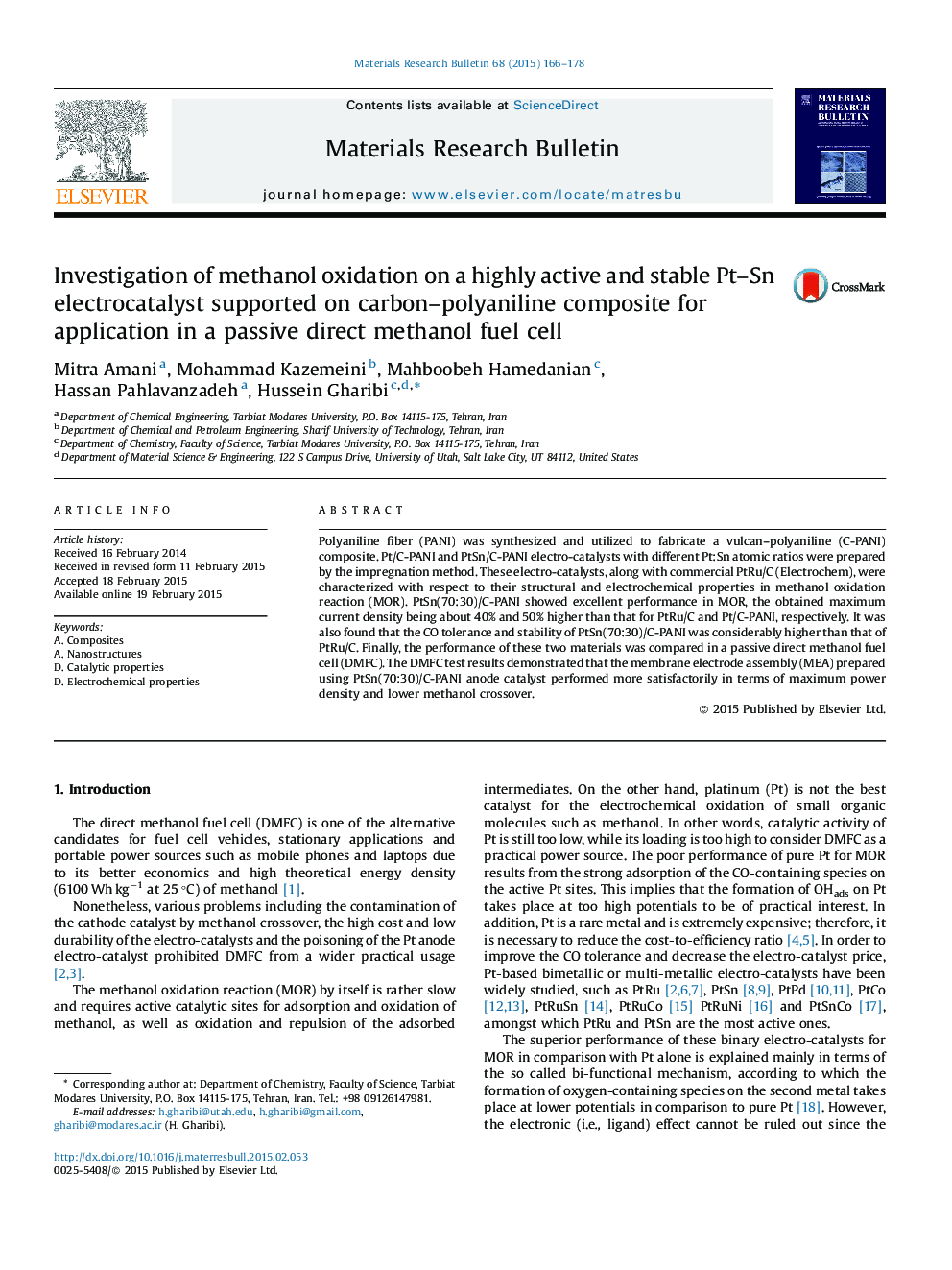| کد مقاله | کد نشریه | سال انتشار | مقاله انگلیسی | نسخه تمام متن |
|---|---|---|---|---|
| 1487739 | 1510707 | 2015 | 13 صفحه PDF | دانلود رایگان |

• PtSn/C-PANI performed superior in the MOR compared with a commercial PtRu/C.
• Catalytic activity of PtRu/C was highly reduced during the accelerated durability test.
• Anode of the PtSn/C-PANI in a passive DMFC lowered methanol crossover by 30%.
Polyaniline fiber (PANI) was synthesized and utilized to fabricate a vulcan–polyaniline (C-PANI) composite. Pt/C-PANI and PtSn/C-PANI electro-catalysts with different Pt:Sn atomic ratios were prepared by the impregnation method. These electro-catalysts, along with commercial PtRu/C (Electrochem), were characterized with respect to their structural and electrochemical properties in methanol oxidation reaction (MOR). PtSn(70:30)/C-PANI showed excellent performance in MOR, the obtained maximum current density being about 40% and 50% higher than that for PtRu/C and Pt/C-PANI, respectively. It was also found that the CO tolerance and stability of PtSn(70:30)/C-PANI was considerably higher than that of PtRu/C. Finally, the performance of these two materials was compared in a passive direct methanol fuel cell (DMFC). The DMFC test results demonstrated that the membrane electrode assembly (MEA) prepared using PtSn(70:30)/C-PANI anode catalyst performed more satisfactorily in terms of maximum power density and lower methanol crossover.
Figure optionsDownload as PowerPoint slide
Journal: Materials Research Bulletin - Volume 68, August 2015, Pages 166–178